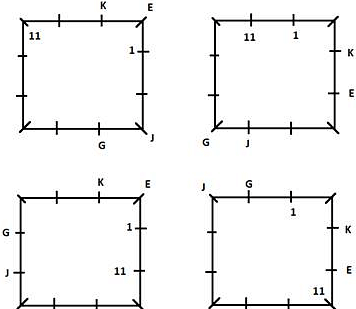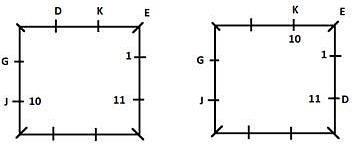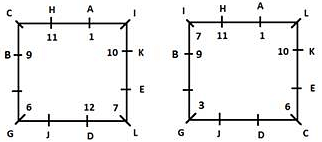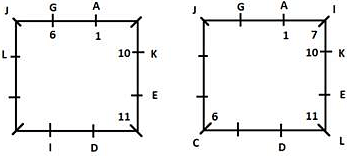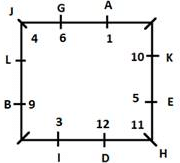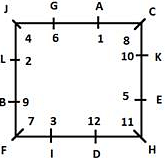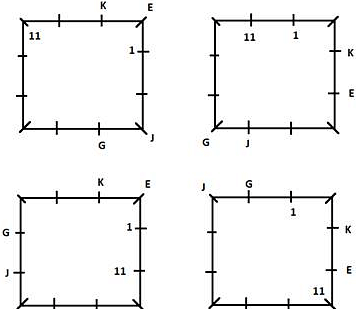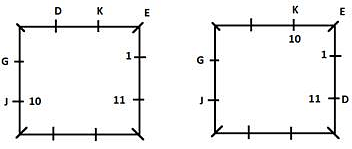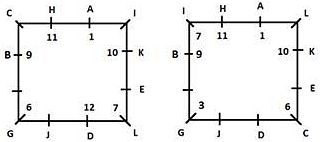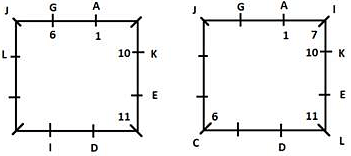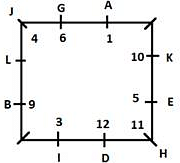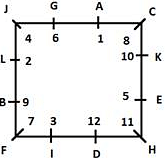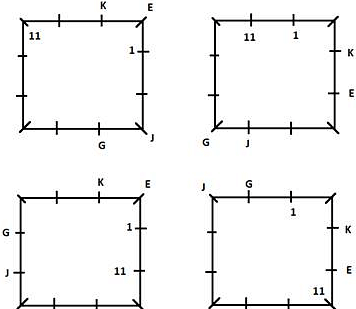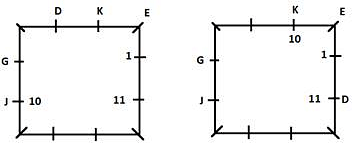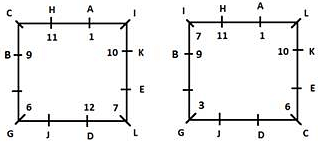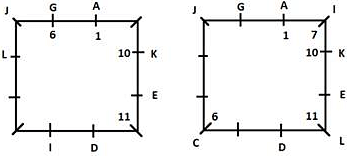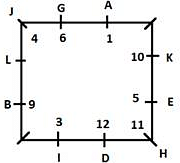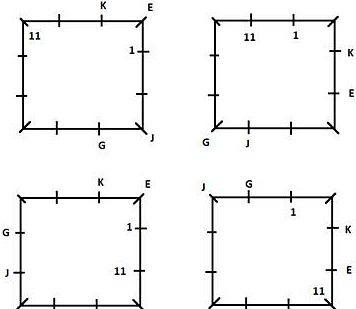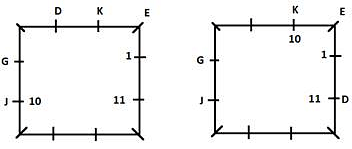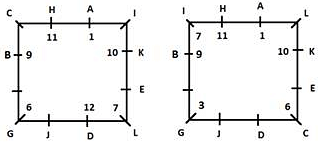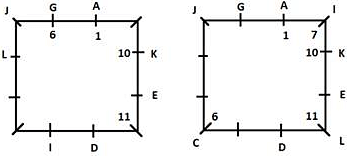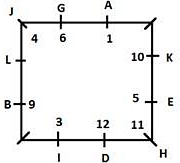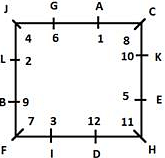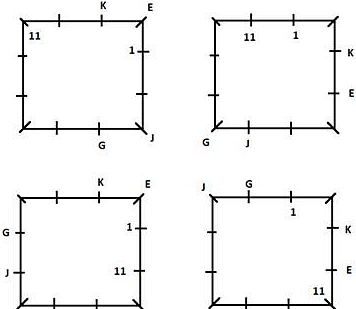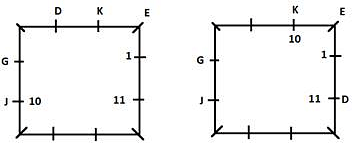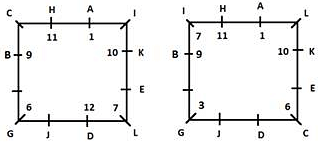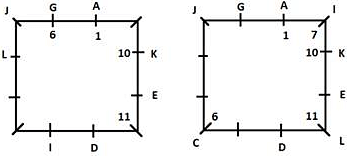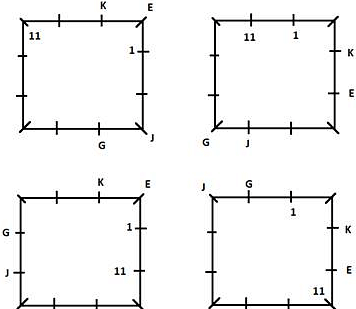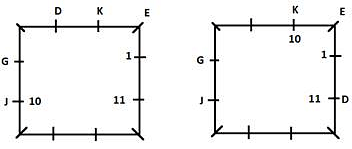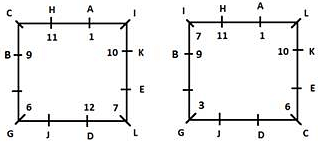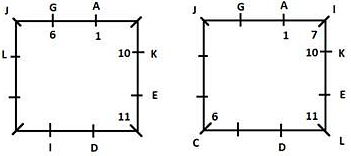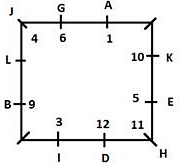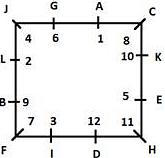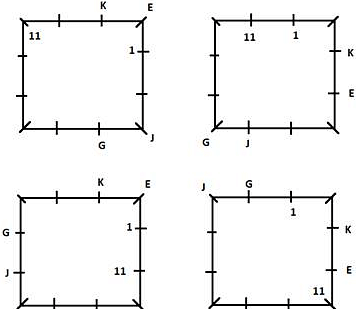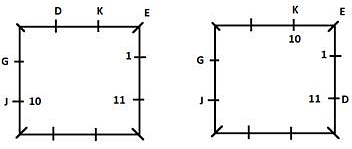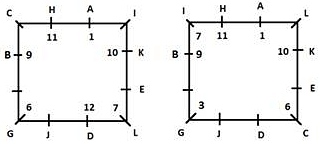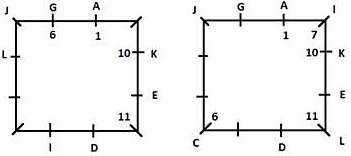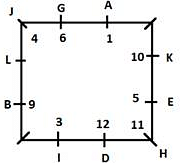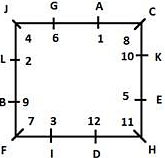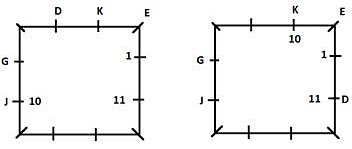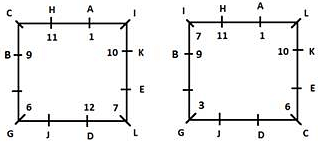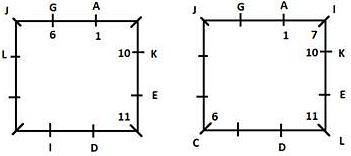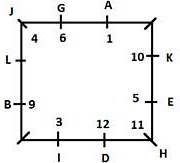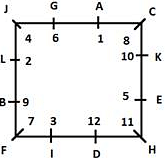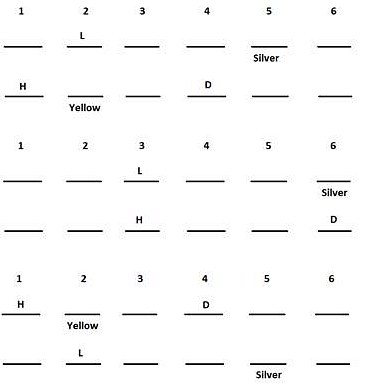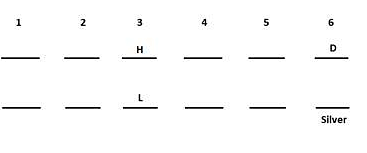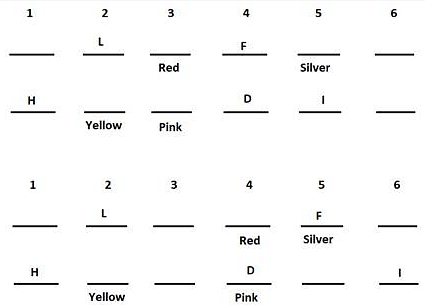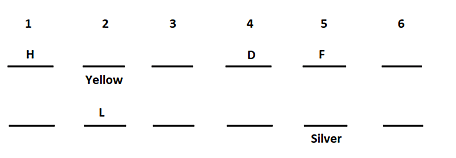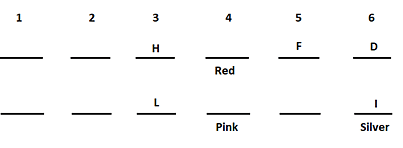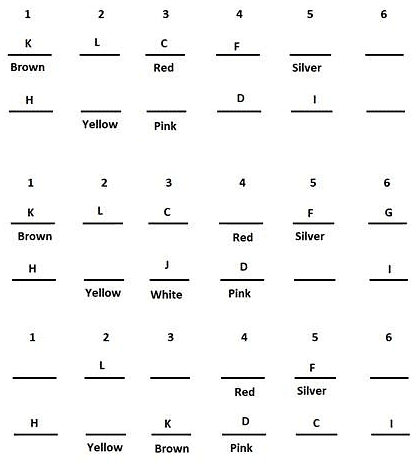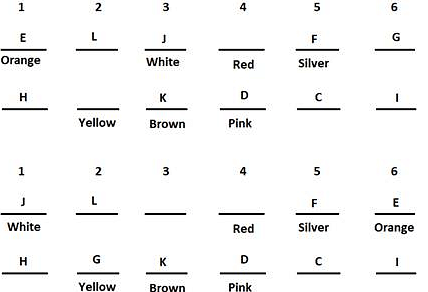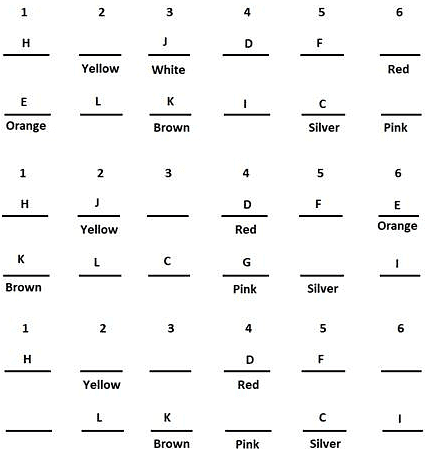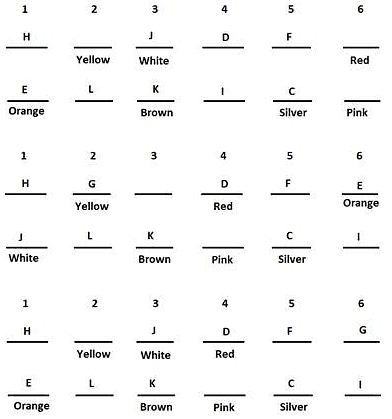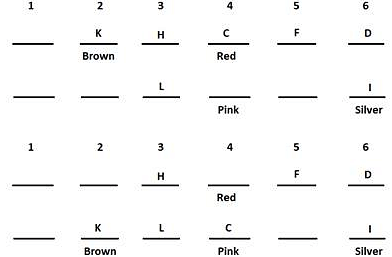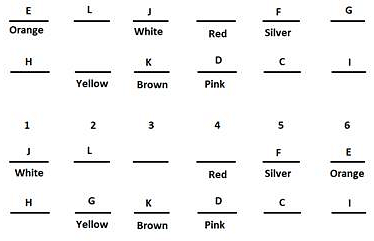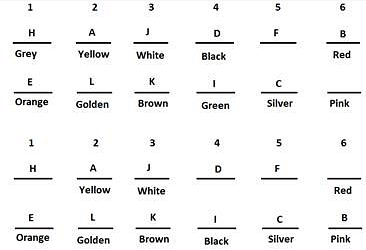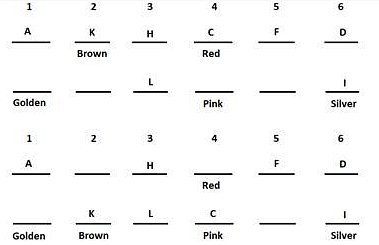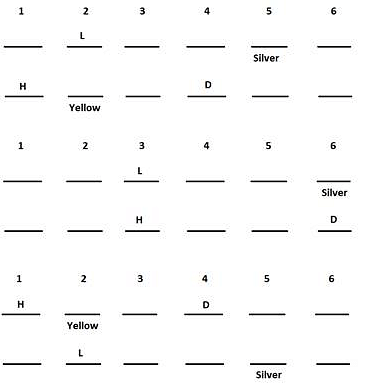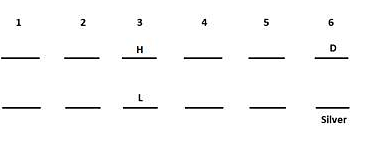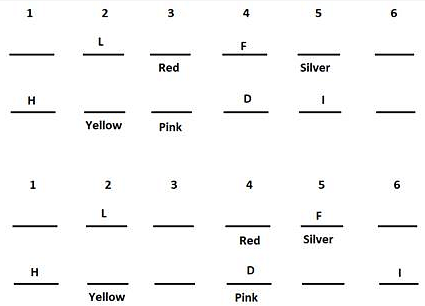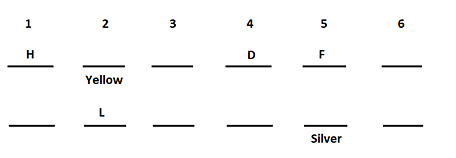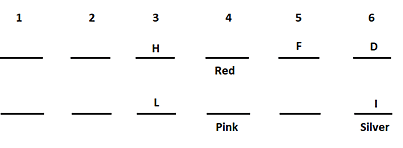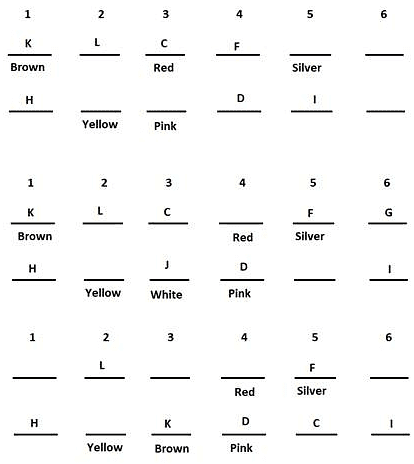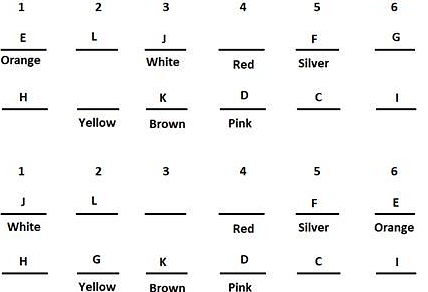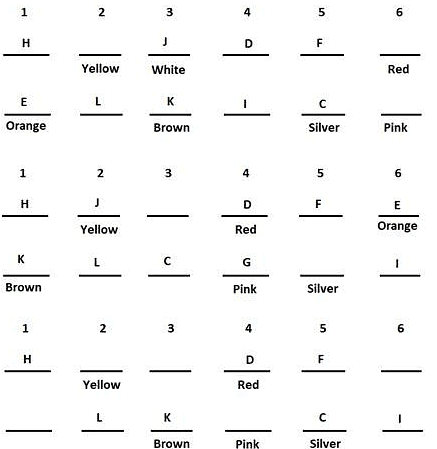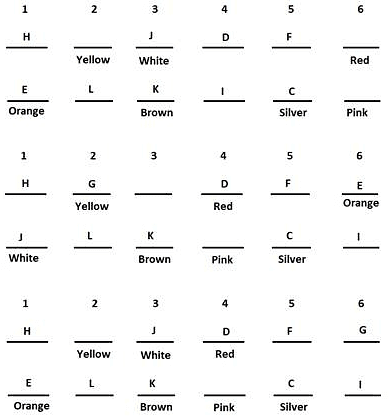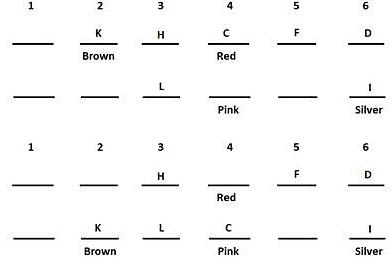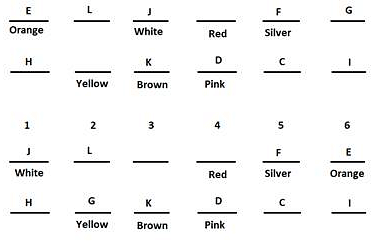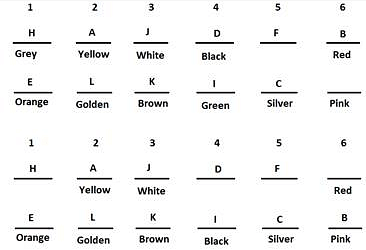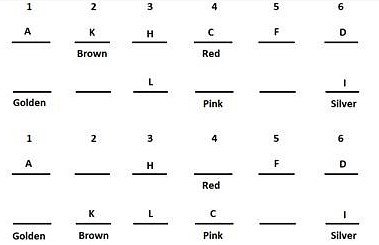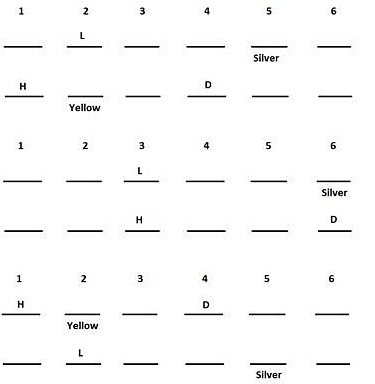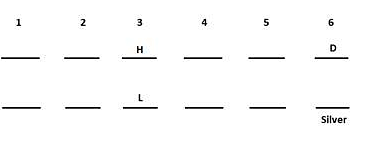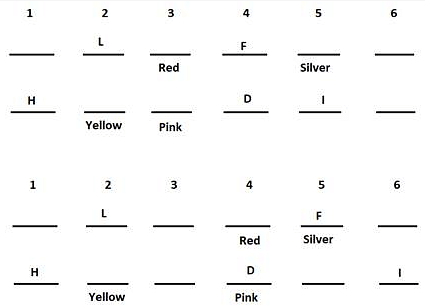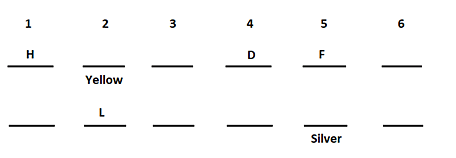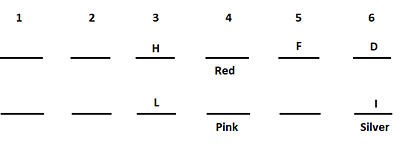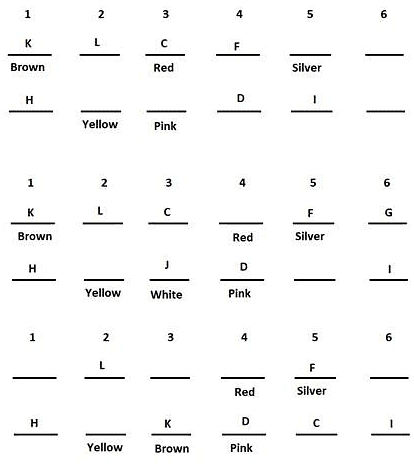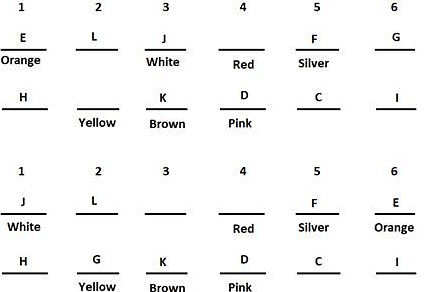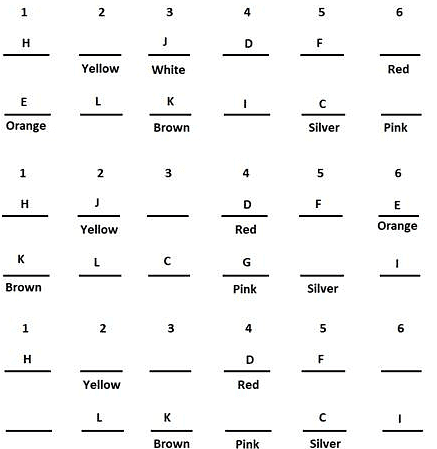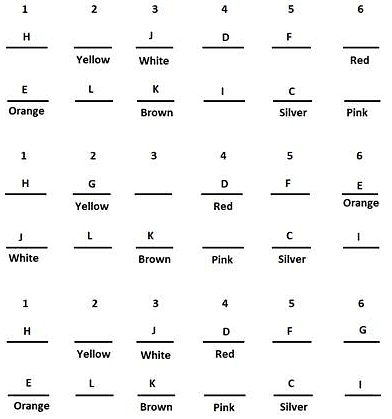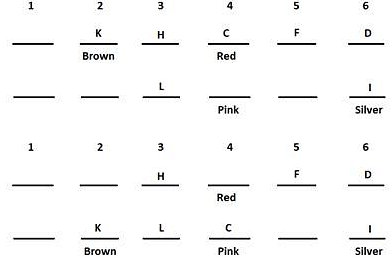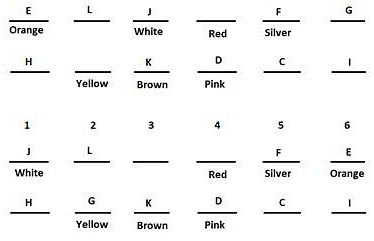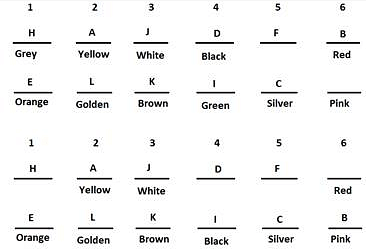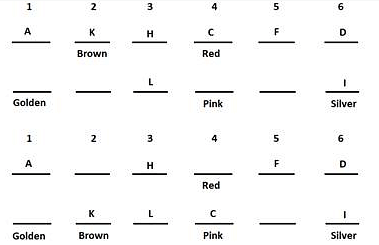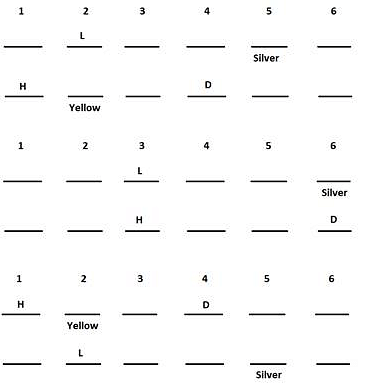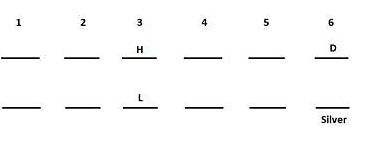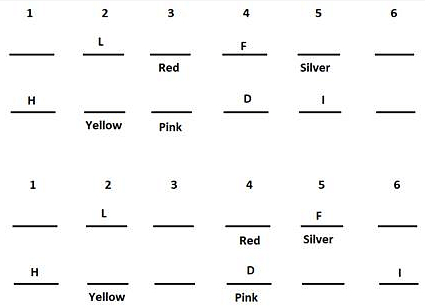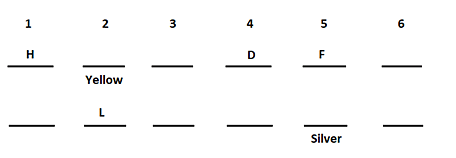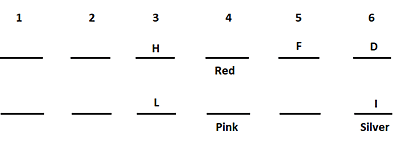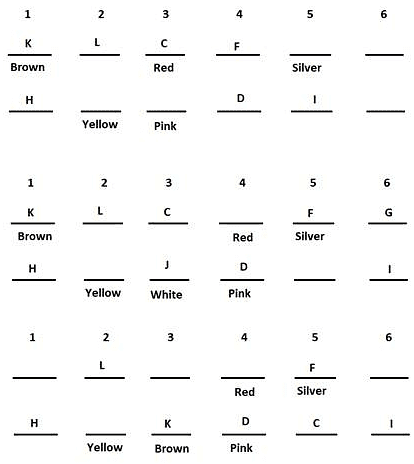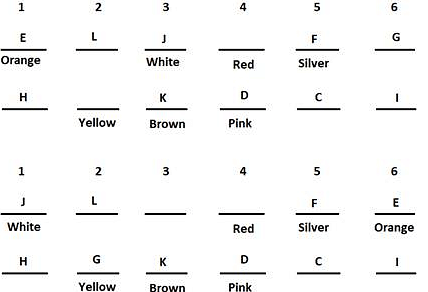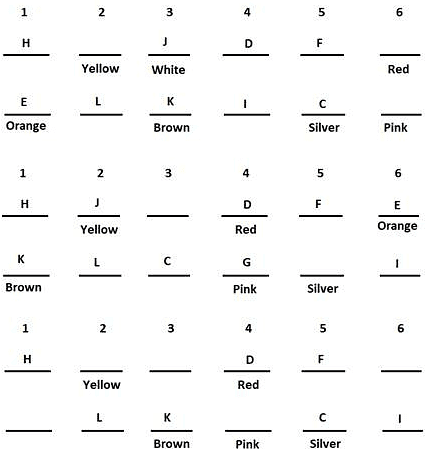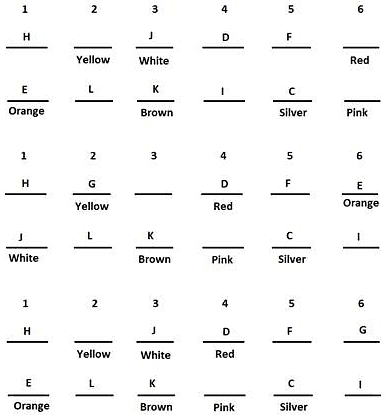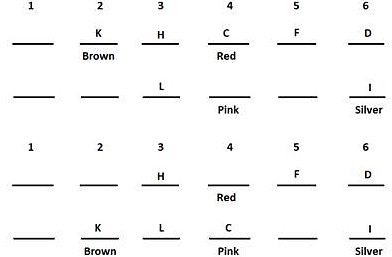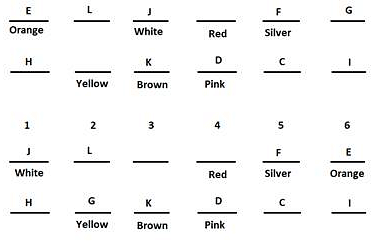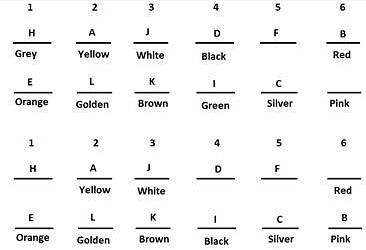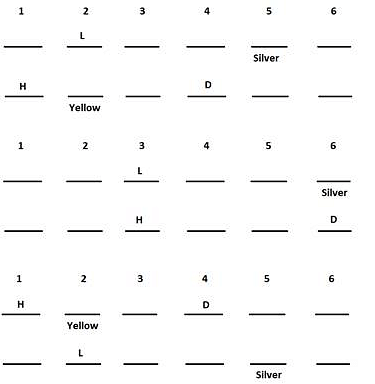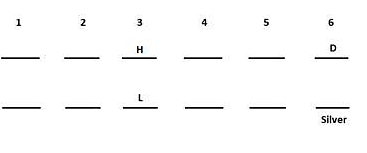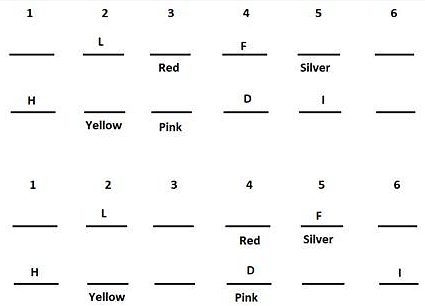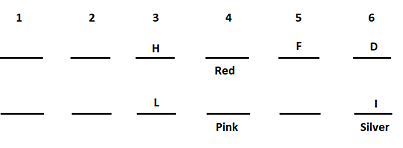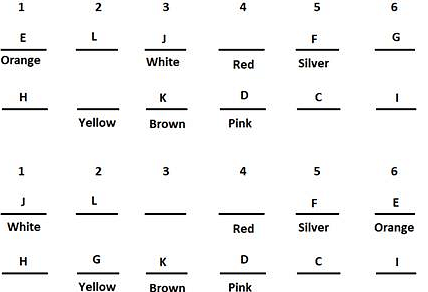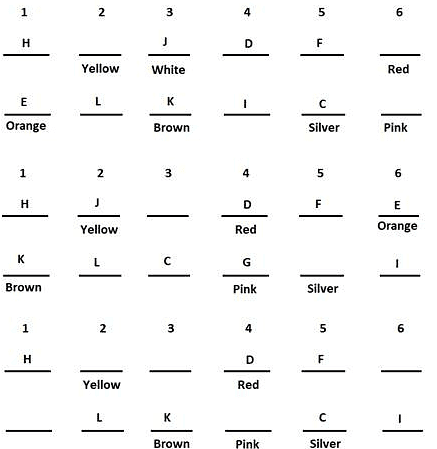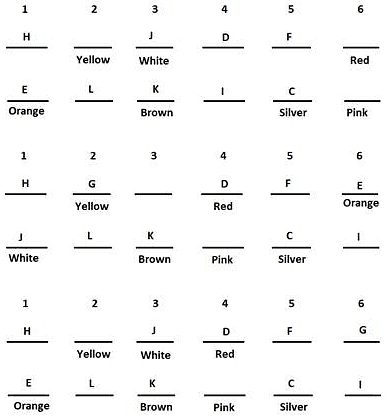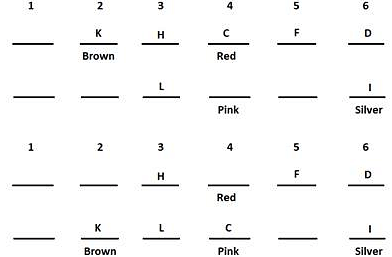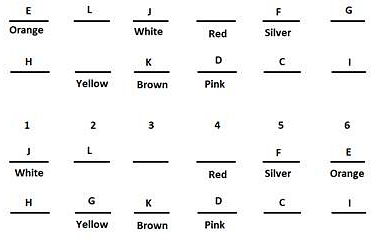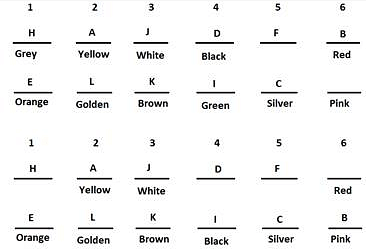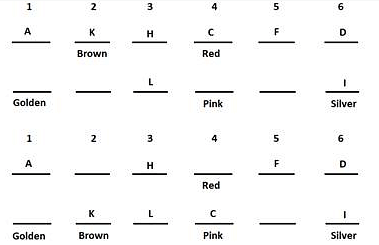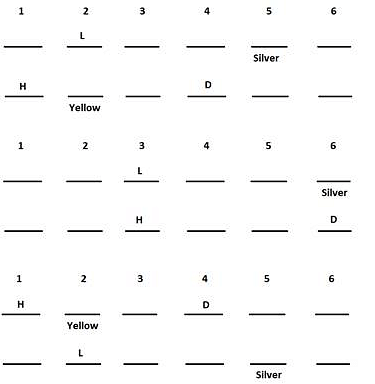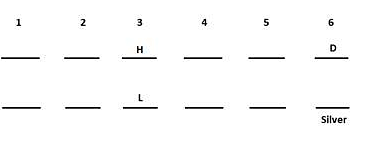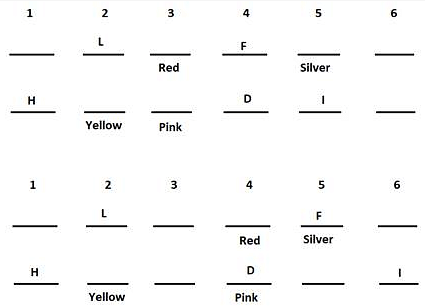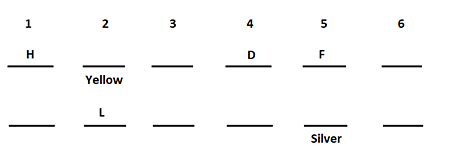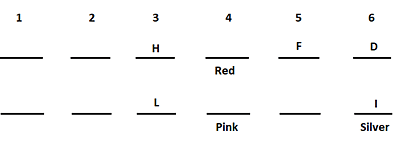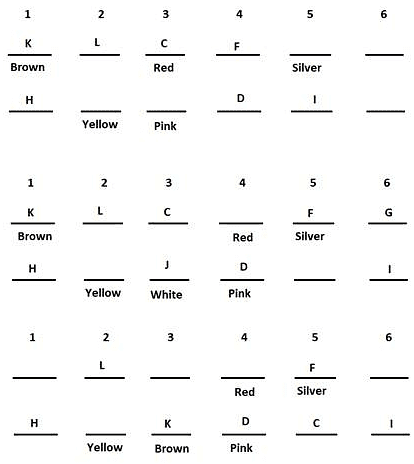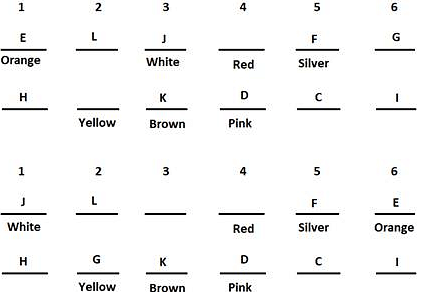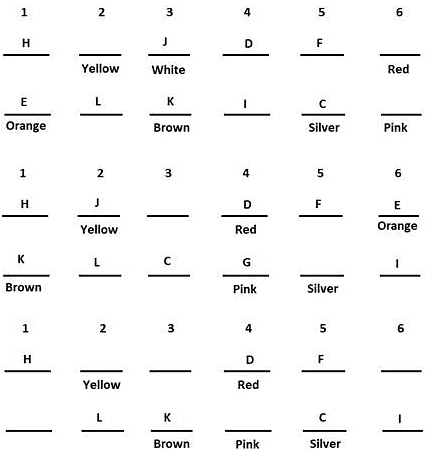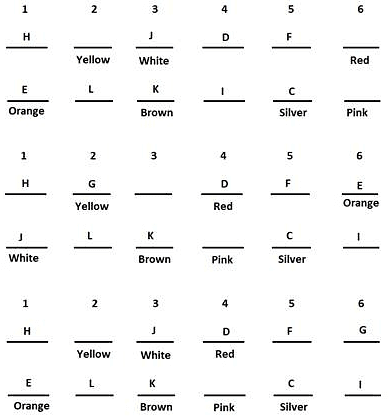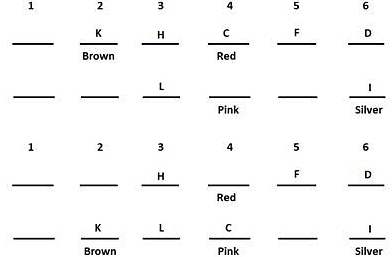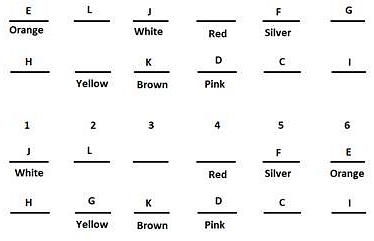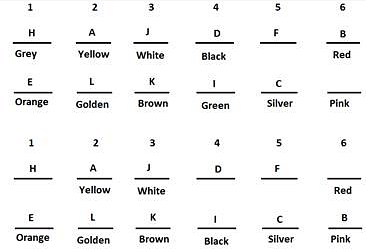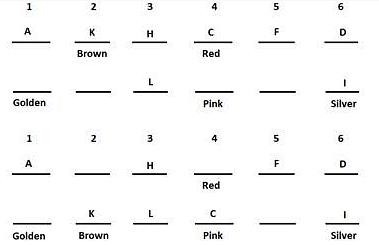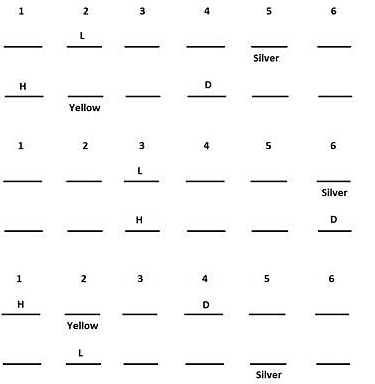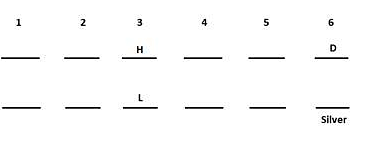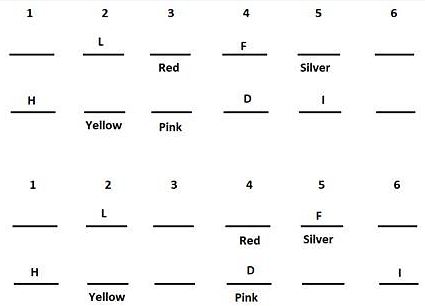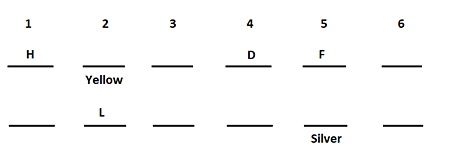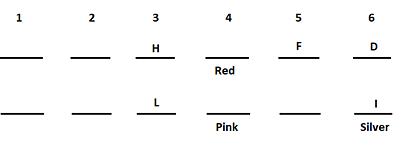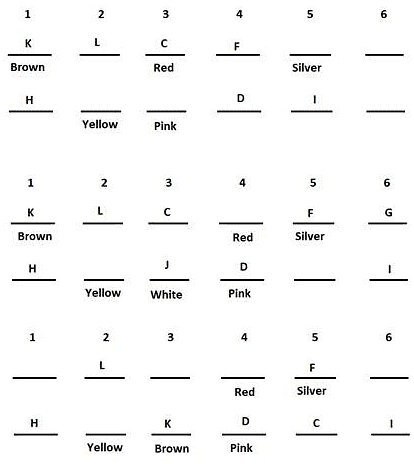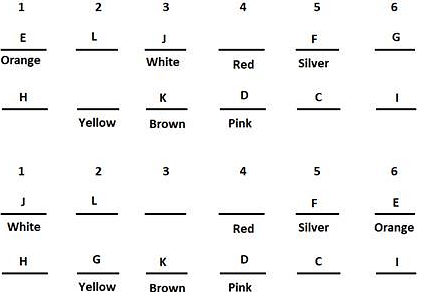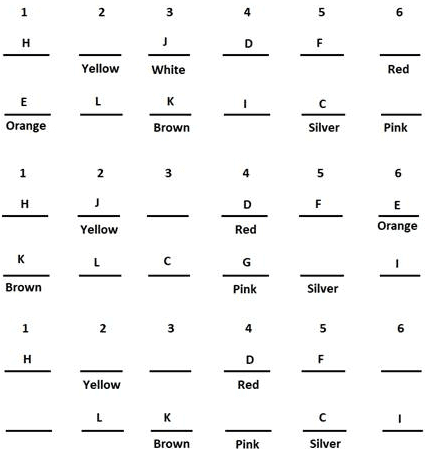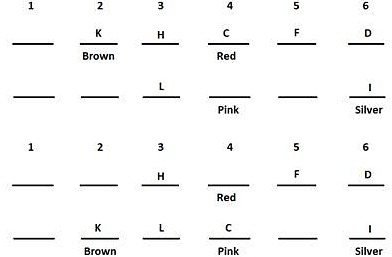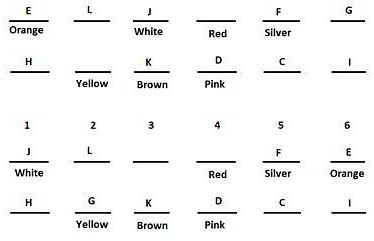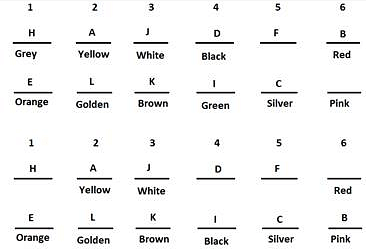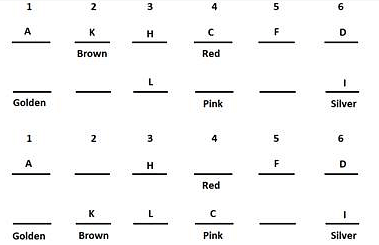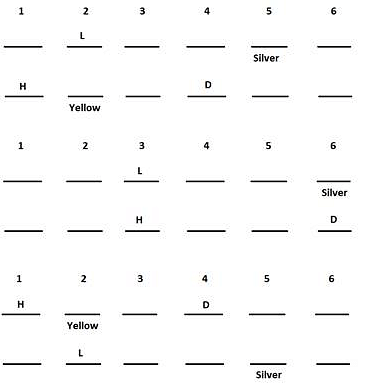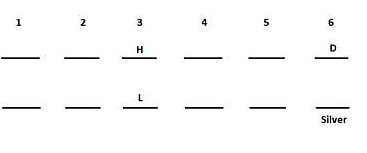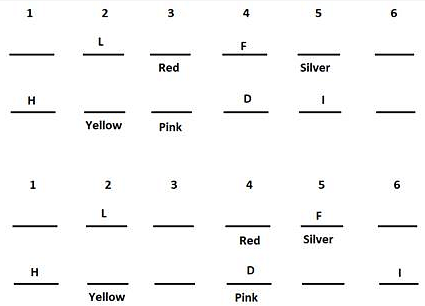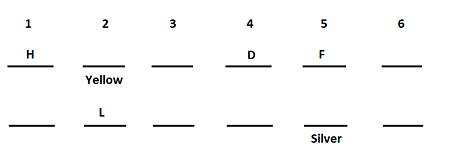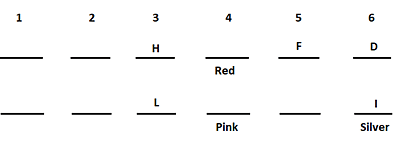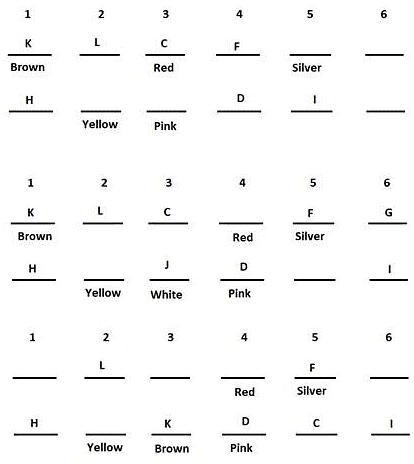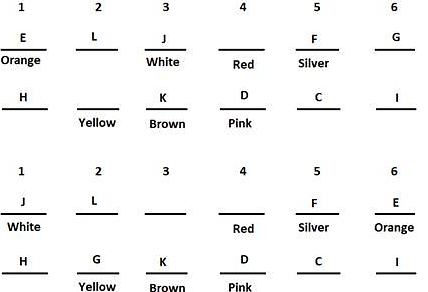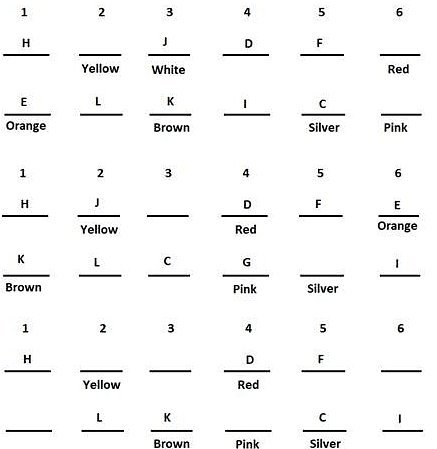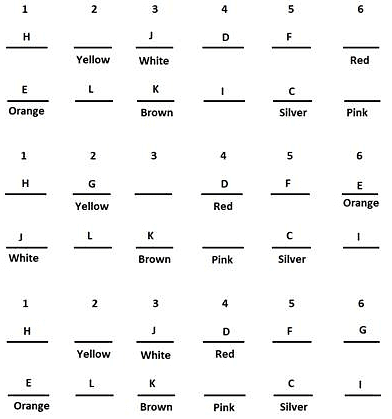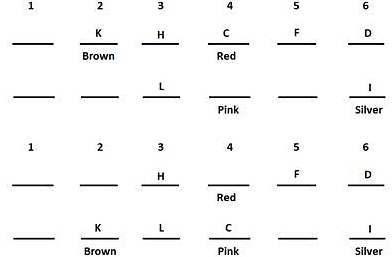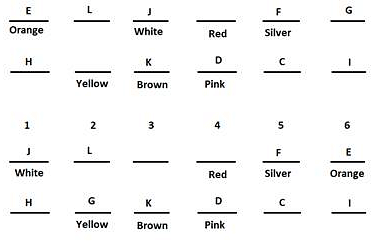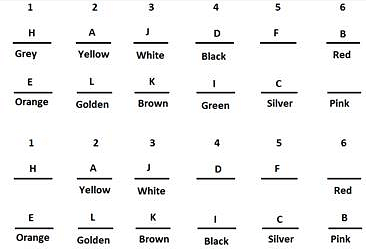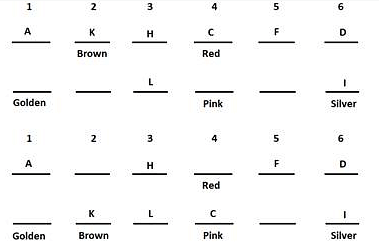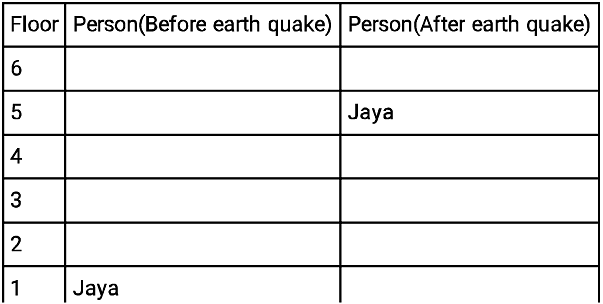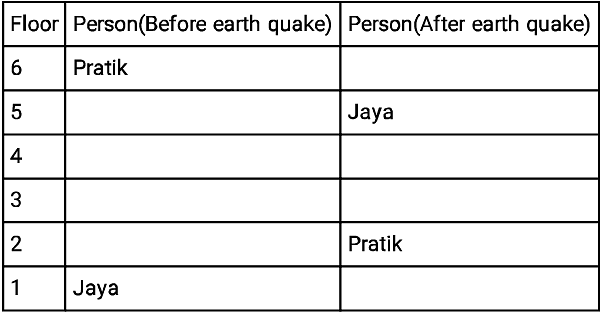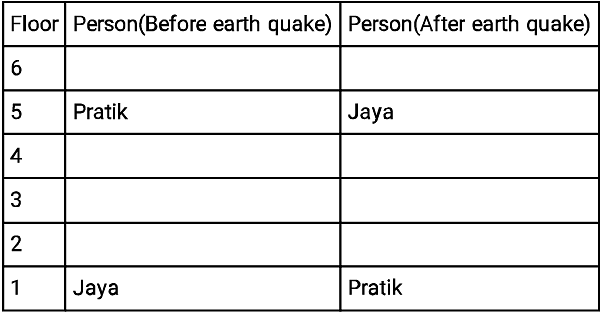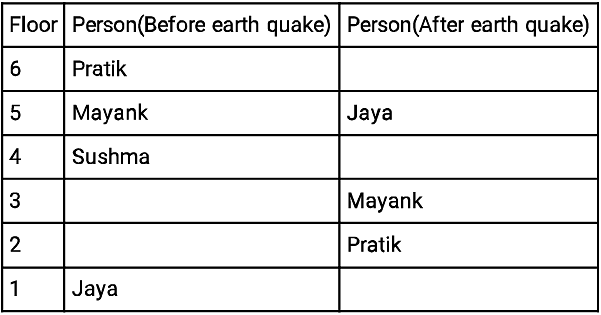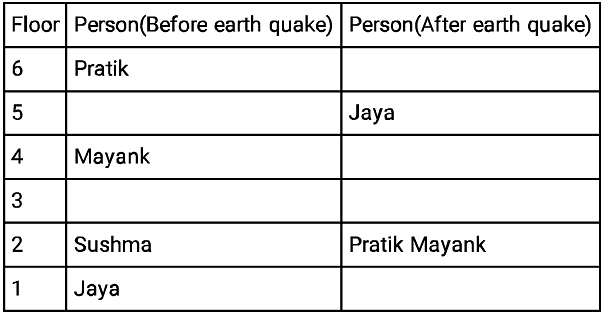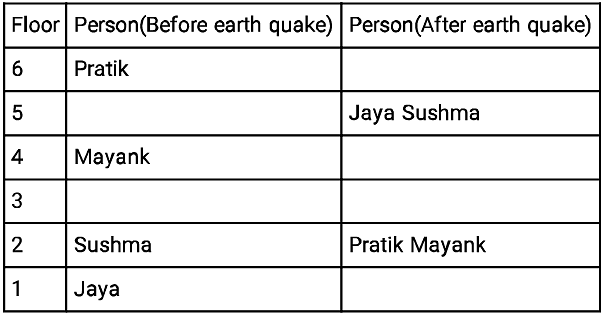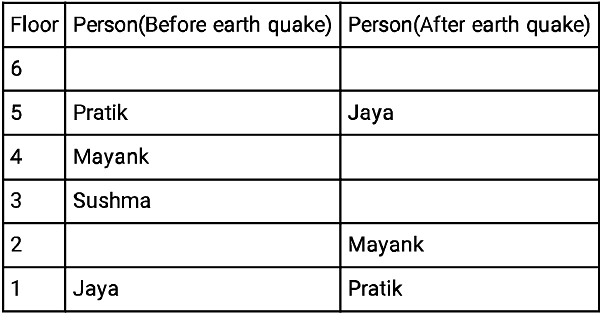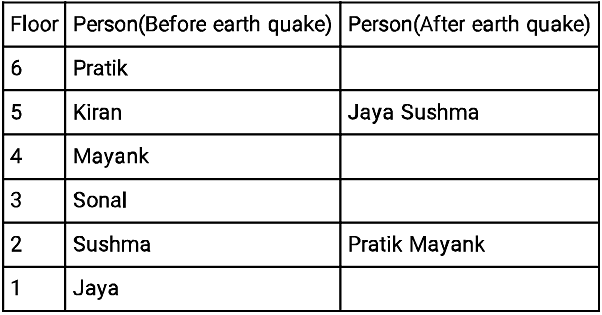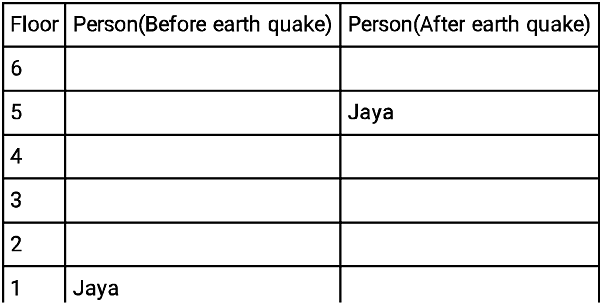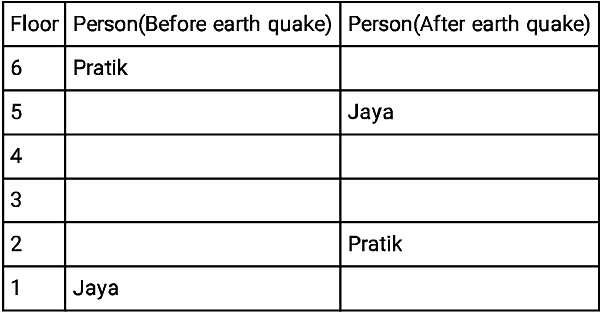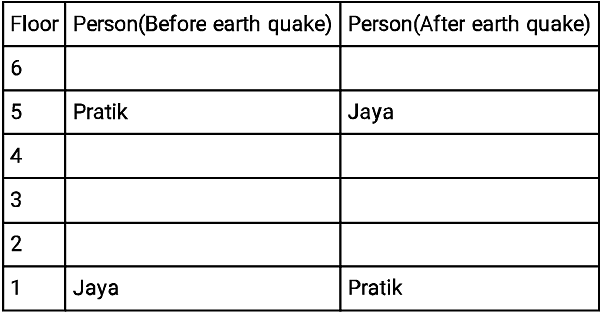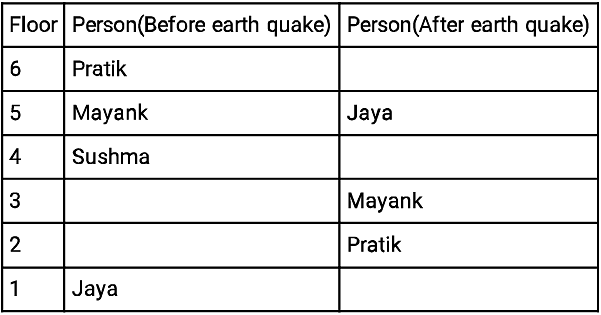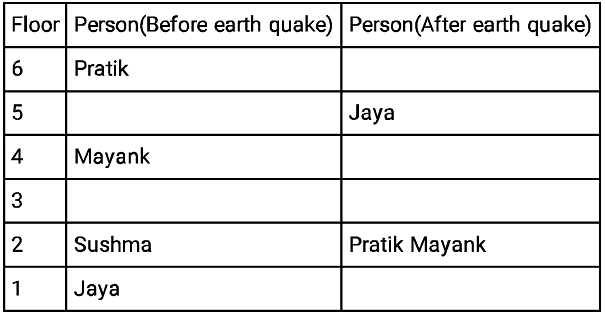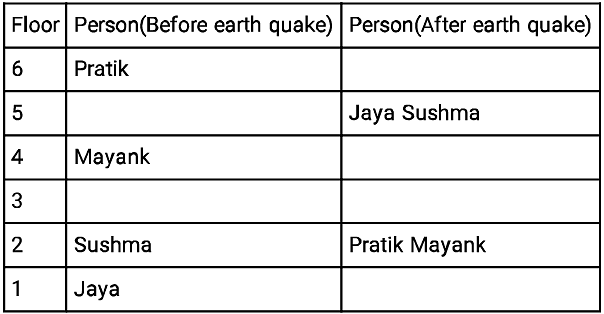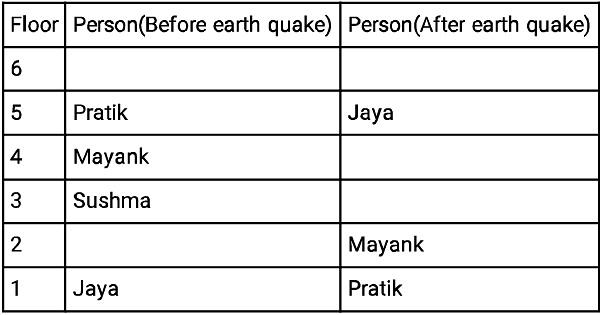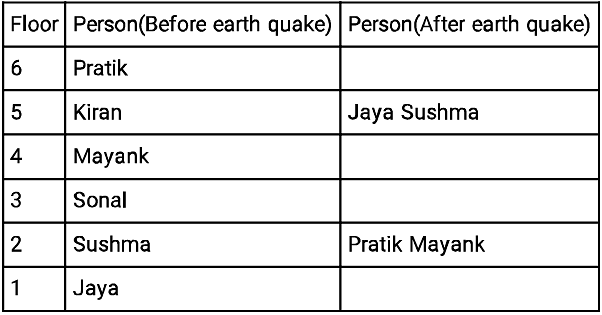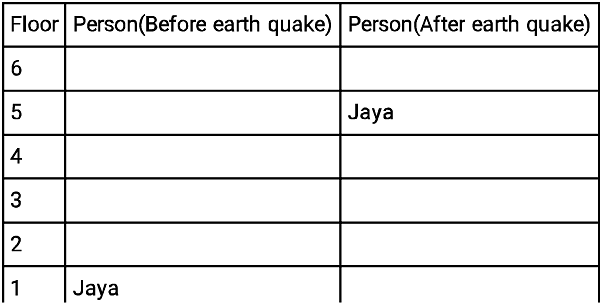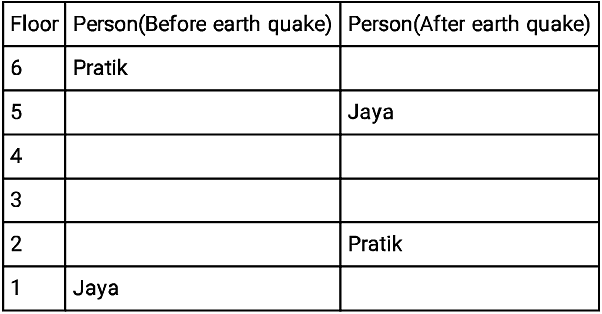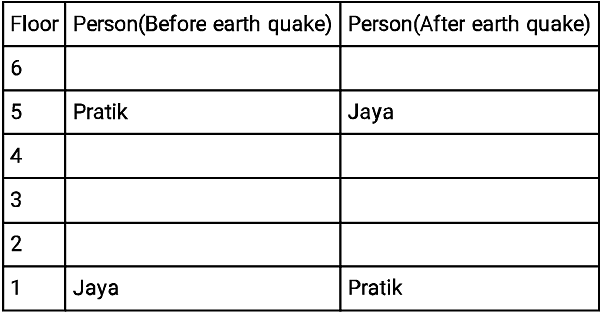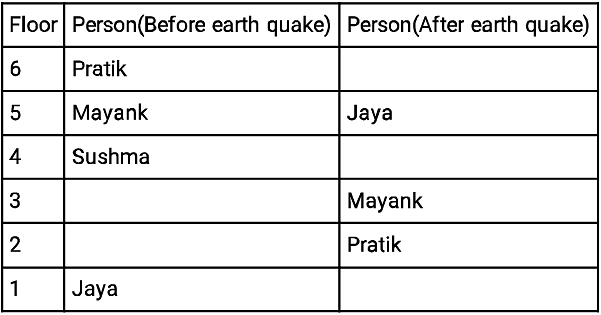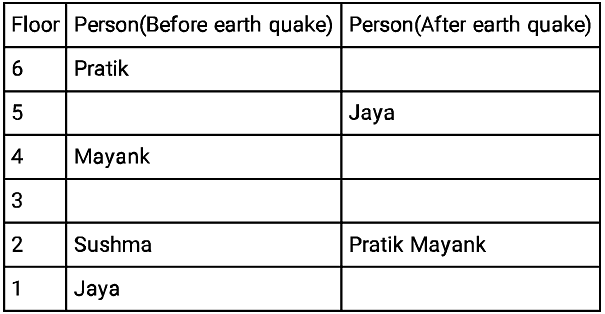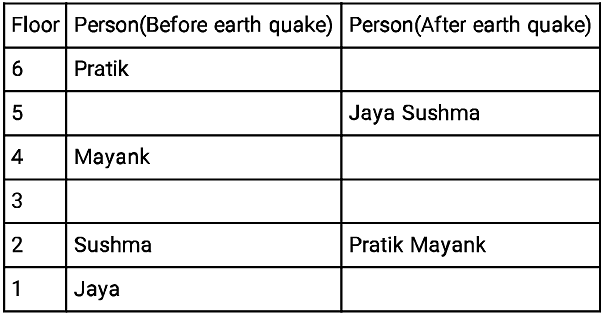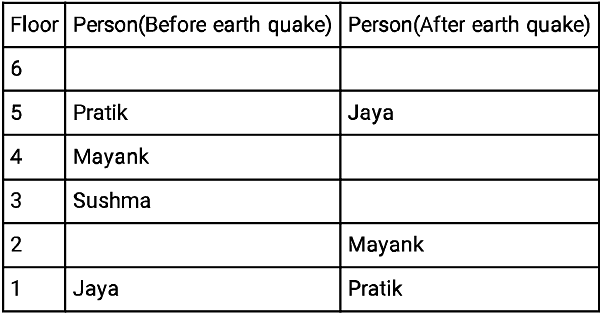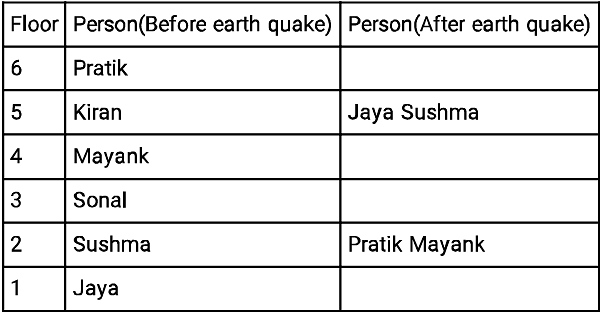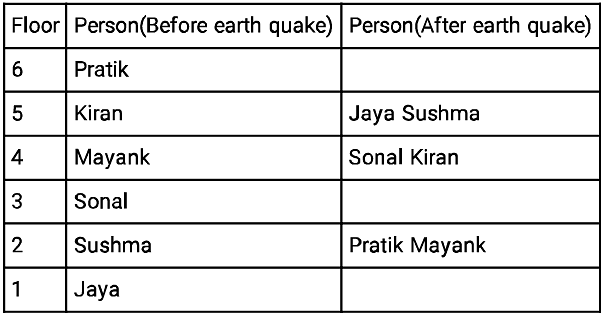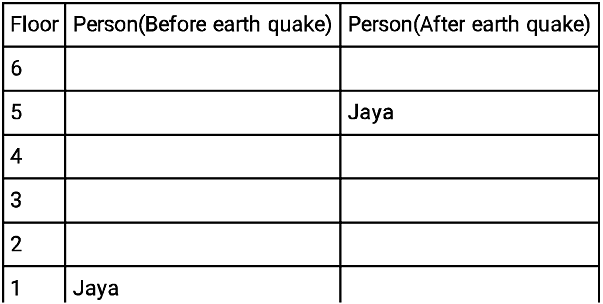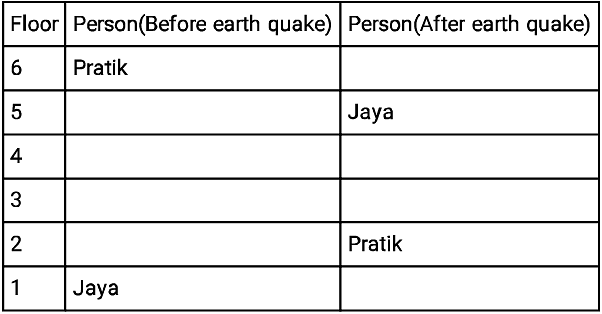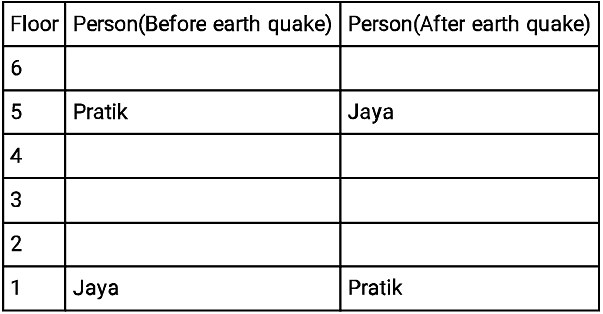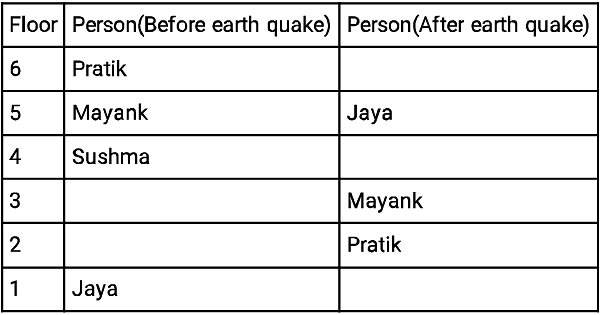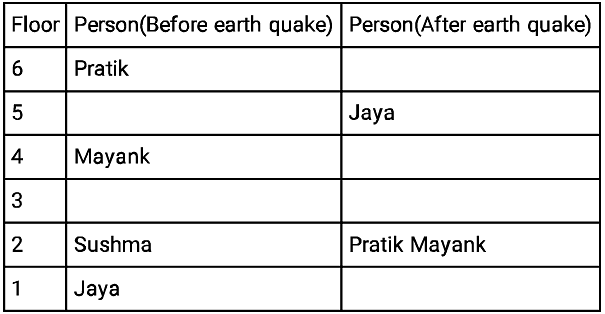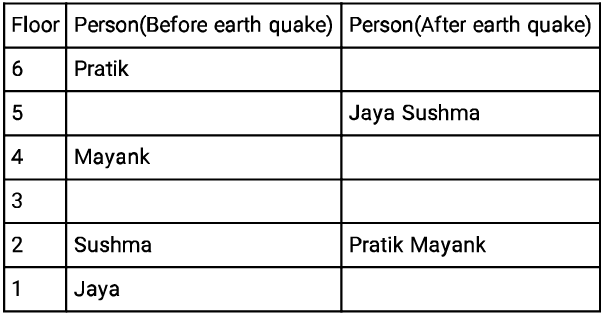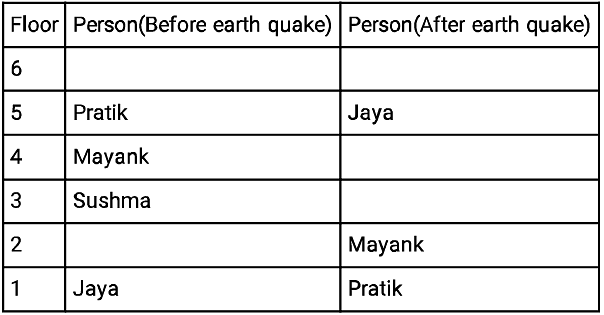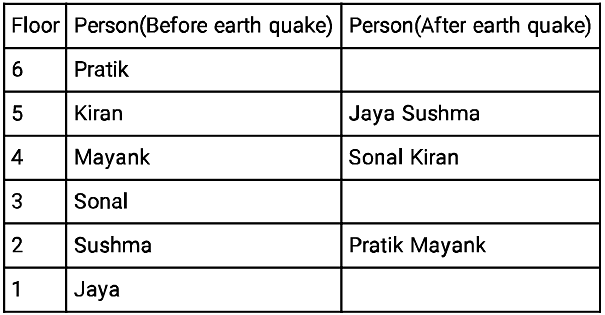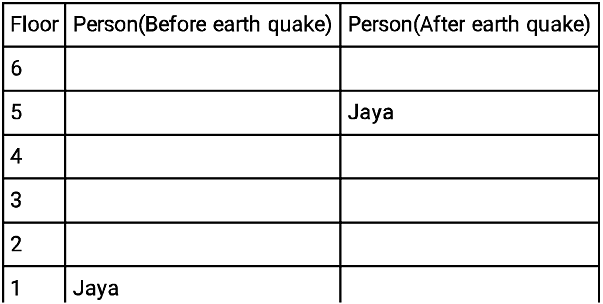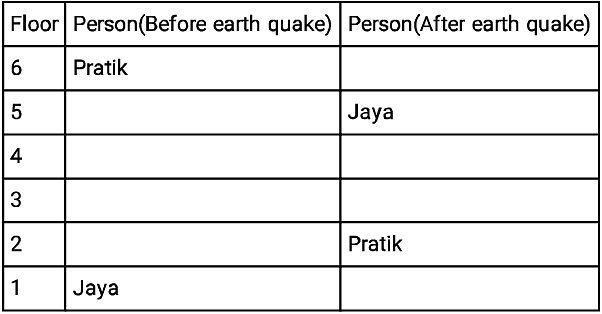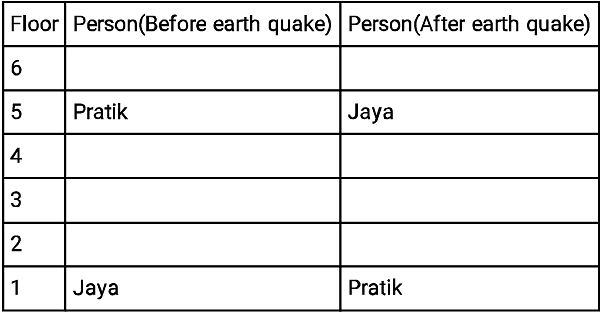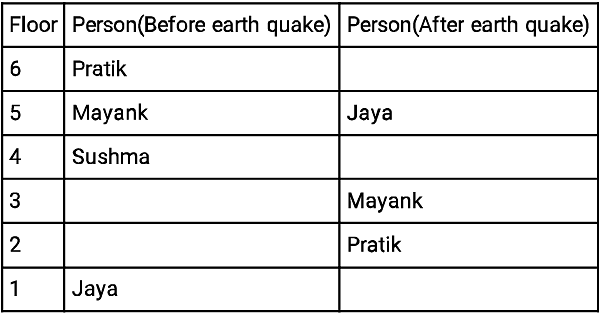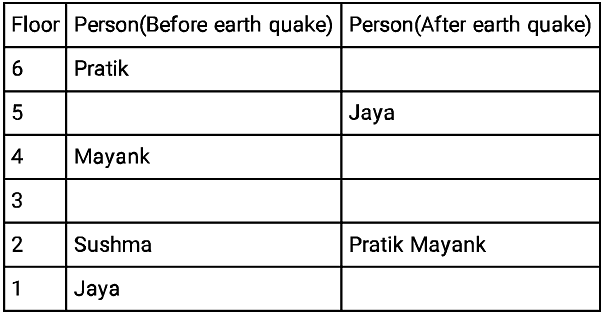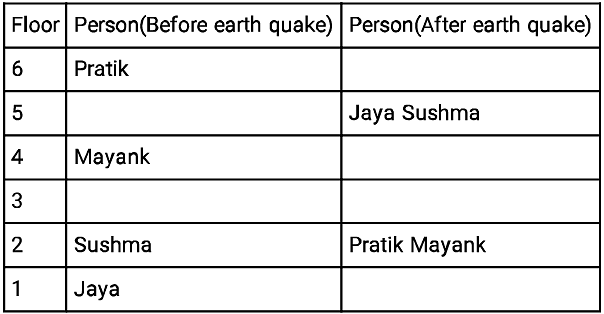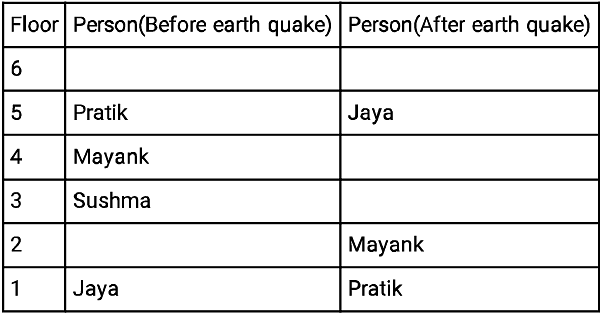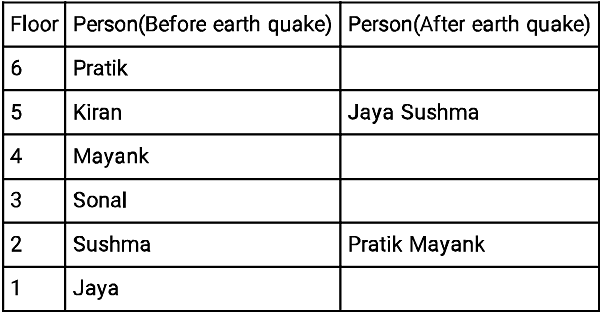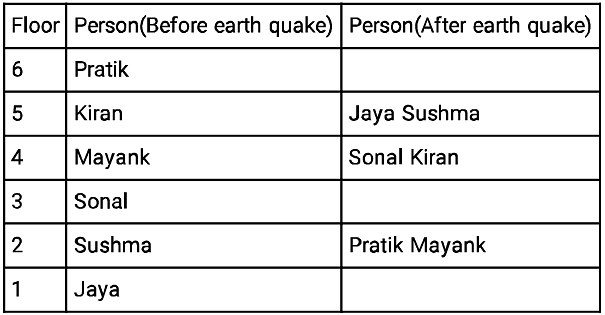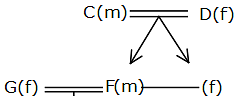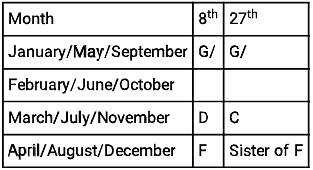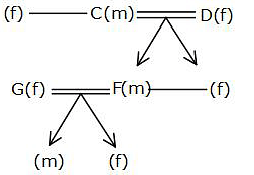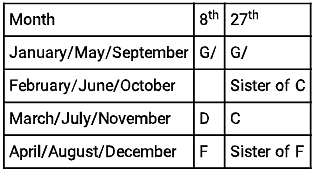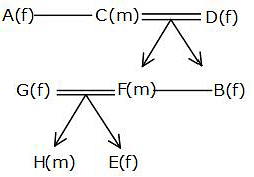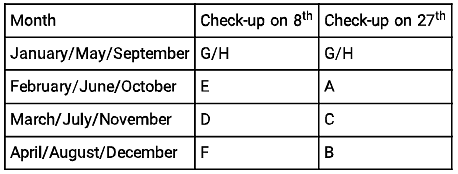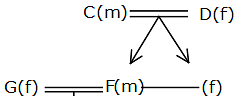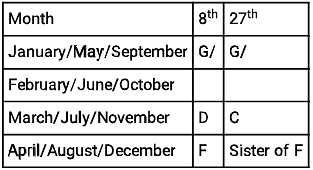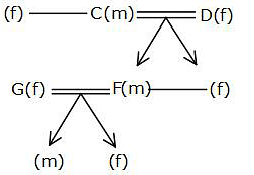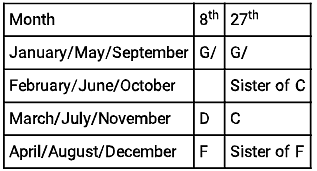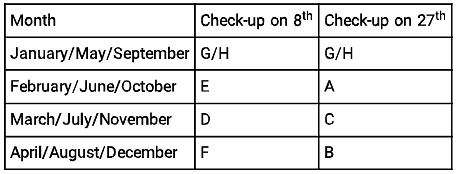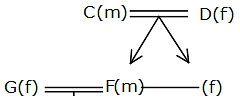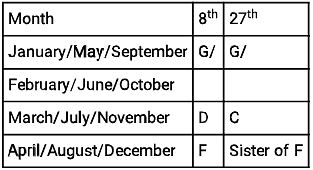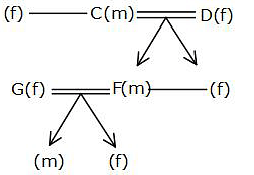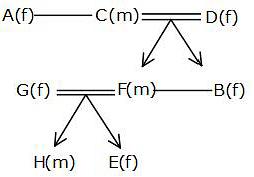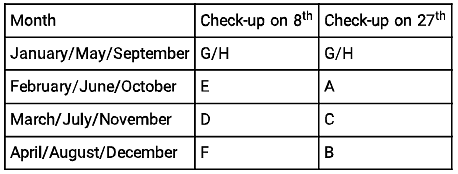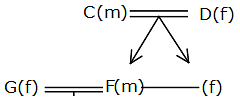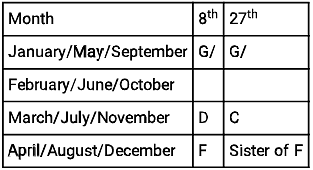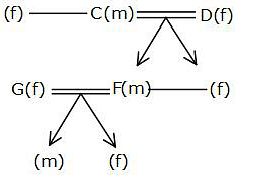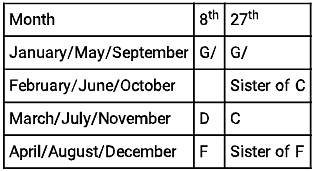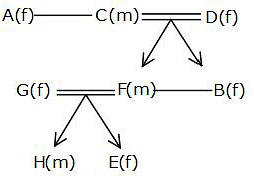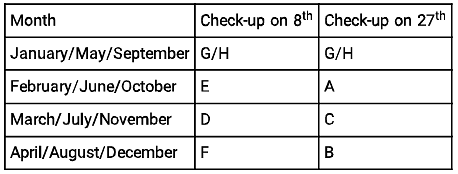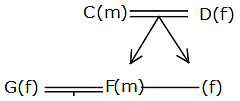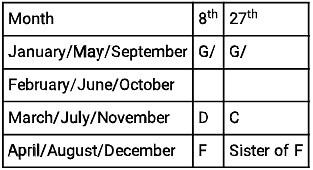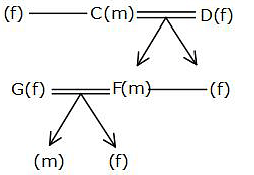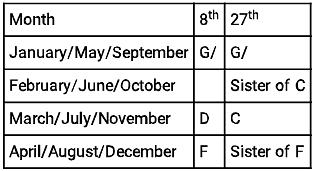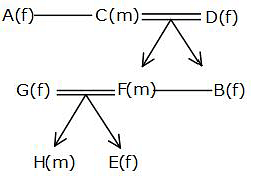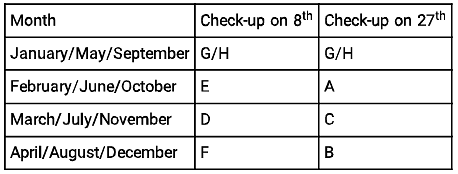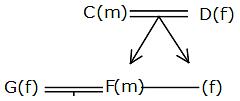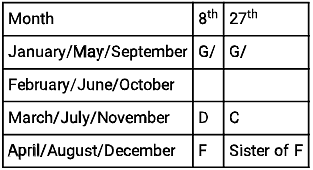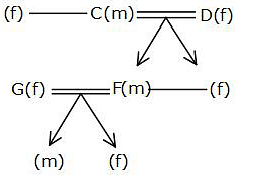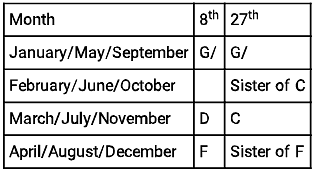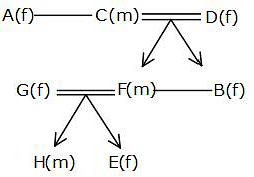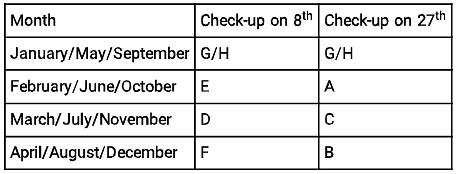MAH-CET MBA Mock Test- 2 - CAT MCQ
30 Questions MCQ Test Additional Study Material for CAT - MAH-CET MBA Mock Test- 2
Comprehension:
You are presented with a paragraph with options (1), (2), (3), (4) and (5). Read the paragraph carefully and identify which of the given options correctly explains the paragraph or correctly summarizes it, if none of the options correctly explains it mark (5) as your answer.
Question:
Fossils found deep in South Africa's Rising Star cave complex in 2013 have been dated by several expert teams with their findings suggesting the hominids, called Homo naledi, may have lived alongside Homo sapiens. It had earlier been thought that the hominids were millions of years old. A team of 20 scientists from laboratories and institutions around the world, including in South Africa and Australia, established the age of the fossils which suggests that Homo naledi may well have lived at the same time as humans. The focus of the team's research has been South Africa's barely accessible Rising Star Cave system, part of the Cradle of Humankind World Heritage Site, about 50 kilometers northwest of Johannesburg. The area has been an incredibly rich source of artifacts.
Comprehension:
You are presented with a paragraph with options (1), (2), (3), (4) and (5). Read the paragraph carefully and identify which of the given options correctly explains the paragraph or correctly summarizes it, if none of the options correctly explains it mark (5) as your answer.
Question:
Under normal market conditions, for customers debt funds have nearly the same liquidity as term deposits with banks. However, given illiquid bond markets, they can have serious liquidity problems. The banking system has access to a liquidity window run by the regulator that allows it to tide over any short-term liquidity challenge, including, at its extreme, a bank run. Currently, no such strong liquidity support exists for credit funds. There is the collateralized lending and borrowing operation (CBLO) run by Clearing Corporation of India but with rapidly growing credit funds, this window is grossly inadequate. So we should consider providing liquidity adjustment facility (LAF) access to credit funds too. This would ensure that in the event of a "fund run" there is enough access to liquidity for funds.
| 1 Crore+ students have signed up on EduRev. Have you? Download the App |
Comprehension:
You are presented with a paragraph with options (1), (2), (3), (4) and (5). Read the paragraph carefully and identify which of the given options correctly explains the paragraph or correctly summarizes it, if none of the options correctly explains it mark (5) as your answer.
Question:
Rational choice theory assumes that all people try to actively maximize their advantage in any situation and therefore consistently try to minimize their losses. The theory is based on the idea that all humans base their decisions on rational calculations, act with rationality when choosing, and aim to increase either pleasure or profit. Rational choice theory also stipulates that all complex social phenomena are driven by individual human actions. Therefore, if an economist wants to explain social change or the actions of social institutions, he needs to look at the rational decisions of the individuals that make up the whole.
Comprehension:
Directions: Twelve children A, B, C, D, E, F, G, H, I, J, K and L were seated around a square table facing the centre. They were aged 1-12 not necessarily in the same order. No two children were of the same age. There was one child at each of the corner and 2 children were seated at each of the sides.
• D was at one of the sides and was 3rd to the left of the one who was 10 years old
• K was to the immediate right of E and he was aged twice as that of E's age
• K and J were seated at a gap of 3 persons
• J was aged 4 times as that of A
• A was seated opposite to D
• D was 6 years elder to G who was to the immediate left of J
• J was opposite to the person who was 11 years old
• B was 2nd to the left of the one who was 3 years old
• The one who was 7 years old was seated opposite to C who was not the youngest
• K and the one who was 1 year old was seated at a gap of 1 and neither of them was at the corner
• K and H were born in consecutive years
• L was seated 3rd to the left of I who was opposite to the one who was 6 years old
• B was 9 years old and G was not seated beside the child who was aged 10.
• B was not neighbouring the child who was 8 years old.
Question:
Who among the following was 2 years old?
Comprehension:
Directions: Twelve children A, B, C, D, E, F, G, H, I, J, K and L were seated around a square table facing the centre. They were aged 1-12 not necessarily in the same order. No two children were of the same age. There was one child at each of the corner and 2 children were seated at each of the sides.
• D was at one of the sides and was 3rd to the left of the one who was 10 years old
• K was to the immediate right of E and he was aged twice as that of E's age
• K and J were seated at a gap of 3 persons
• J was aged 4 times as that of A
• A was seated opposite to D
• D was 6 years elder to G who was to the immediate left of J
• J was opposite to the person who was 11 years old
• B was 2nd to the left of the one who was 3 years old
• The one who was 7 years old was seated opposite to C who was not the youngest
• K and the one who was 1 year old was seated at a gap of 1 and neither of them was at the corner
• K and H were born in consecutive years
• L was seated 3rd to the left of I who was opposite to the one who was 6 years old
• B was 9 years old and G was not seated beside the child who was aged 10.
• B was not neighbouring the child who was 8 years old.
Question:
Who among the following was seated opposite to the one who was 8 years old?
Comprehension:
Directions: Twelve children A, B, C, D, E, F, G, H, I, J, K and L were seated around a square table facing the centre. They were aged 1-12 not necessarily in the same order. No two children were of the same age. There was one child at each of the corner and 2 children were seated at each of the sides.
• D was at one of the sides and was 3rd to the left of the one who was 10 years old
• K was to the immediate right of E and he was aged twice as that of E's age
• K and J were seated at a gap of 3 persons
• J was aged 4 times as that of A
• A was seated opposite to D
• D was 6 years elder to G who was to the immediate left of J
• J was opposite to the person who was 11 years old
• B was 2nd to the left of the one who was 3 years old
• The one who was 7 years old was seated opposite to C who was not the youngest
• K and the one who was 1 year old was seated at a gap of 1 and neither of them was at the corner
• K and H were born in consecutive years
• L was seated 3rd to the left of I who was opposite to the one who was 6 years old
• B was 9 years old and G was not seated beside the child who was aged 10.
• B was not neighbouring the child who was 8 years old.
Question:
Who among the following was the youngest?
Comprehension:
Directions: Twelve children A, B, C, D, E, F, G, H, I, J, K and L were seated around a square table facing the centre. They were aged 1-12 not necessarily in the same order. No two children were of the same age. There was one child at each of the corner and 2 children were seated at each of the sides.
• D was at one of the sides and was 3rd to the left of the one who was 10 years old
• K was to the immediate right of E and he was aged twice as that of E's age
• K and J were seated at a gap of 3 persons
• J was aged 4 times as that of A
• A was seated opposite to D
• D was 6 years elder to G who was to the immediate left of J
• J was opposite to the person who was 11 years old
• B was 2nd to the left of the one who was 3 years old
• The one who was 7 years old was seated opposite to C who was not the youngest
• K and the one who was 1 year old was seated at a gap of 1 and neither of them was at the corner
• K and H were born in consecutive years
• L was seated 3rd to the left of I who was opposite to the one who was 6 years old
• B was 9 years old and G was not seated beside the child who was aged 10.
• B was not neighbouring the child who was 8 years old.
Question:
In which of the following groups was the 3rd person neighbouring the 1st and the 2nd person?
Comprehension:
Directions: Twelve children A, B, C, D, E, F, G, H, I, J, K and L were seated around a square table facing the centre. They were aged 1-12 not necessarily in the same order. No two children were of the same age. There was one child at each of the corner and 2 children were seated at each of the sides.
• D was at one of the sides and was 3rd to the left of the one who was 10 years old
• K was to the immediate right of E and he was aged twice as that of E's age
• K and J were seated at a gap of 3 persons
• J was aged 4 times as that of A
• A was seated opposite to D
• D was 6 years elder to G who was to the immediate left of J
• J was opposite to the person who was 11 years old
• B was 2nd to the left of the one who was 3 years old
• The one who was 7 years old was seated opposite to C who was not the youngest
• K and the one who was 1 year old was seated at a gap of 1 and neither of them was at the corner
• K and H were born in consecutive years
• L was seated 3rd to the left of I who was opposite to the one who was 6 years old
• B was 9 years old and G was not seated beside the child who was aged 10.
• B was not neighbouring the child who was 8 years old.
Question:
Four of the following bear a similar relationship and hence form a group, who among the following is not a part of that group?
Comprehension:
Directions: Twelve children A, B, C, D, E, F, G, H, I, J, K and L were seated around a square table facing the centre. They were aged 1-12 not necessarily in the same order. No two children were of the same age. There was one child at each of the corner and 2 children were seated at each of the sides.
• D was at one of the sides and was 3rd to the left of the one who was 10 years old
• K was to the immediate right of E and he was aged twice as that of E's age
• K and J were seated at a gap of 3 persons
• J was aged 4 times as that of A
• A was seated opposite to D
• D was 6 years elder to G who was to the immediate left of J
• J was opposite to the person who was 11 years old
• B was 2nd to the left of the one who was 3 years old
• The one who was 7 years old was seated opposite to C who was not the youngest
• K and the one who was 1 year old was seated at a gap of 1 and neither of them was at the corner
• K and H were born in consecutive years
• L was seated 3rd to the left of I who was opposite to the one who was 6 years old
• B was 9 years old and G was not seated beside the child who was aged 10.
• B was not neighbouring the child who was 8 years old.
What was the difference between the age of D and C?
Comprehension:
Directions: Twelve children A, B, C, D, E, F, G, H, I, J, K and L were seated around a square table facing the centre. They were aged 1-12 not necessarily in the same order. No two children were of the same age. There was one child at each of the corner and 2 children were seated at each of the sides.
• D was at one of the sides and was 3rd to the left of the one who was 10 years old
• K was to the immediate right of E and he was aged twice as that of E's age
• K and J were seated at a gap of 3 persons
• J was aged 4 times as that of A
• A was seated opposite to D
• D was 6 years elder to G who was to the immediate left of J
• J was opposite to the person who was 11 years old
• B was 2nd to the left of the one who was 3 years old
• The one who was 7 years old was seated opposite to C who was not the youngest
• K and the one who was 1 year old was seated at a gap of 1 and neither of them was at the corner
• K and H were born in consecutive years
• L was seated 3rd to the left of I who was opposite to the one who was 6 years old
• B was 9 years old and G was not seated beside the child who was aged 10.
• B was not neighbouring the child who was 8 years old.
Question:
What was the position of L with respect to the one who was 4 years old?
Comprehension:
Directions: Twelve children A, B, C, D, E, F, G, H, I, J, K and L were seated around a square table facing the centre. They were aged 1-12 not necessarily in the same order. No two children were of the same age. There was one child at each of the corner and 2 children were seated at each of the sides.
• D was at one of the sides and was 3rd to the left of the one who was 10 years old
• K was to the immediate right of E and he was aged twice as that of E's age
• K and J were seated at a gap of 3 persons
• J was aged 4 times as that of A
• A was seated opposite to D
• D was 6 years elder to G who was to the immediate left of J
• J was opposite to the person who was 11 years old
• B was 2nd to the left of the one who was 3 years old
• The one who was 7 years old was seated opposite to C who was not the youngest
• K and the one who was 1 year old was seated at a gap of 1 and neither of them was at the corner
• K and H were born in consecutive years
• L was seated 3rd to the left of I who was opposite to the one who was 6 years old
• B was 9 years old and G was not seated beside the child who was aged 10.
• B was not neighbouring the child who was 8 years old.
Question:
How many persons were younger than the person who was seated opposite to H?
Comprehension:
Directions: 12 friends A, B, C, D, E, F, G, H, I, J, K and L went to see a movie. They were seated in two different rows each having six seats. They were seated facing the north. The seats were numbered 1-6 from left to right and were of different colour red, green, yellow, white, grey, black, purple, pink, orange, golden, silver and brown not necessarily in the same order.
• L was seated 3rd to the left of the one on the silver seat, L was not at the extreme end
• D's seat number was twice as that of L's seat number and they were in different rows
• D and H were seated at a gap of 2 seats
• H's neighbour was seated on the yellow seat
• The red and pink seats had the same seat number
• F was seated neighbouring the one who was on the red seat and the one who was seated exactly in front of I.
• K was seated 2nd to the left of C
• The seat number of the green seat was 3 more than the seat number of the grey seat and they were not in the same row
• G's seat number was twice as that of J's seat number. J was on the white seat
• A was seated exactly in front of the golden seat
• B was 2nd to the right of the one seated on the black seat
• E was on the orange seat and was at either of the extreme ends
• K was seated either on the pink or the brown seat
• F was not seated neighbouring L or H
Question:
Four of the following bear a similar relationship and hence form a group, who among the following is not a part of that group?
Comprehension:
Directions: 12 friends A, B, C, D, E, F, G, H, I, J, K and L went to see a movie. They were seated in two different rows each having six seats. They were seated facing the north. The seats were numbered 1-6 from left to right and were of different colour red, green, yellow, white, grey, black, purple, pink, orange, golden, silver and brown not necessarily in the same order.
• L was seated 3rd to the left of the one on the silver seat, L was not at the extreme end
• D's seat number was twice as that of L's seat number and they were in different rows
• D and H were seated at a gap of 2 seats
• H's neighbour was seated on the yellow seat
• The red and pink seats had the same seat number
• F was seated neighbouring the one who was on the red seat and the one who was seated exactly in front of I.
• K was seated 2nd to the left of C
• The seat number of the green seat was 3 more than the seat number of the grey seat and they were not in the same row
• G's seat number was twice as that of J's seat number. J was on the white seat
• A was seated exactly in front of the golden seat
• B was 2nd to the right of the one seated on the black seat
• E was on the orange seat and was at either of the extreme ends
• K was seated either on the pink or the brown seat
• F was not seated neighbouring L or H
Question:
On which of the following seats was C seated?
Comprehension:
Directions: 12 friends A, B, C, D, E, F, G, H, I, J, K and L went to see a movie. They were seated in two different rows each having six seats. They were seated facing the north. The seats were numbered 1-6 from left to right and were of different colour red, green, yellow, white, grey, black, purple, pink, orange, golden, silver and brown not necessarily in the same order.
• L was seated 3rd to the left of the one on the silver seat, L was not at the extreme end
• D's seat number was twice as that of L's seat number and they were in different rows
• D and H were seated at a gap of 2 seats
• H's neighbour was seated on the yellow seat
• The red and pink seats had the same seat number
• F was seated neighbouring the one who was on the red seat and the one who was seated exactly in front of I.
• K was seated 2nd to the left of C
• The seat number of the green seat was 3 more than the seat number of the grey seat and they were not in the same row
• G's seat number was twice as that of J's seat number. J was on the white seat
• A was seated exactly in front of the golden seat
• B was 2nd to the right of the one seated on the black seat
• E was on the orange seat and was at either of the extreme ends
• K was seated either on the pink or the brown seat
• F was not seated neighbouring L or H
Question:
Who among the following was seated on the purple seat?
Comprehension:
Directions: 12 friends A, B, C, D, E, F, G, H, I, J, K and L went to see a movie. They were seated in two different rows each having six seats. They were seated facing the north. The seats were numbered 1-6 from left to right and were of different colour red, green, yellow, white, grey, black, purple, pink, orange, golden, silver and brown not necessarily in the same order.
• L was seated 3rd to the left of the one on the silver seat, L was not at the extreme end
• D's seat number was twice as that of L's seat number and they were in different rows
• D and H were seated at a gap of 2 seats
• H's neighbour was seated on the yellow seat
• The red and pink seats had the same seat number
• F was seated neighbouring the one who was on the red seat and the one who was seated exactly in front of I.
• K was seated 2nd to the left of C
• The seat number of the green seat was 3 more than the seat number of the grey seat and they were not in the same row
• G's seat number was twice as that of J's seat number. J was on the white seat
• A was seated exactly in front of the golden seat
• B was 2nd to the right of the one seated on the black seat
• E was on the orange seat and was at either of the extreme ends
• K was seated either on the pink or the brown seat
• F was not seated neighbouring L or H
Question:
Who among the following was/were seated on seat number 4?
I. B
II. I
III. K
Comprehension:
Directions: 12 friends A, B, C, D, E, F, G, H, I, J, K and L went to see a movie. They were seated in two different rows each having six seats. They were seated facing the north. The seats were numbered 1-6 from left to right and were of different colour red, green, yellow, white, grey, black, purple, pink, orange, golden, silver and brown not necessarily in the same order.
• L was seated 3rd to the left of the one on the silver seat, L was not at the extreme end
• D's seat number was twice as that of L's seat number and they were in different rows
• D and H were seated at a gap of 2 seats
• H's neighbour was seated on the yellow seat
• The red and pink seats had the same seat number
• F was seated neighbouring the one who was on the red seat and the one who was seated exactly in front of I.
• K was seated 2nd to the left of C
• The seat number of the green seat was 3 more than the seat number of the grey seat and they were not in the same row
• G's seat number was twice as that of J's seat number. J was on the white seat
• A was seated exactly in front of the golden seat
• B was 2nd to the right of the one seated on the black seat
• E was on the orange seat and was at either of the extreme ends
• K was seated either on the pink or the brown seat
• F was not seated neighbouring L or H
Question:
How many persons were seated to the left (same row) of the golden seat?
Comprehension:
Directions: 12 friends A, B, C, D, E, F, G, H, I, J, K and L went to see a movie. They were seated in two different rows each having six seats. They were seated facing the north. The seats were numbered 1-6 from left to right and were of different colour red, green, yellow, white, grey, black, purple, pink, orange, golden, silver and brown not necessarily in the same order.
• L was seated 3rd to the left of the one on the silver seat, L was not at the extreme end
• D's seat number was twice as that of L's seat number and they were in different rows
• D and H were seated at a gap of 2 seats
• H's neighbour was seated on the yellow seat
• The red and pink seats had the same seat number
• F was seated neighbouring the one who was on the red seat and the one who was seated exactly in front of I.
• K was seated 2nd to the left of C
• The seat number of the green seat was 3 more than the seat number of the grey seat and they were not in the same row
• G's seat number was twice as that of J's seat number. J was on the white seat
• A was seated exactly in front of the golden seat
• B was 2nd to the right of the one seated on the black seat
• E was on the orange seat and was at either of the extreme ends
• K was seated either on the pink or the brown seat
• F was not seated neighbouring L or H
Question:
Who among the following was seated exactly behind J?
Comprehension:
Directions: 12 friends A, B, C, D, E, F, G, H, I, J, K and L went to see a movie. They were seated in two different rows each having six seats. They were seated facing the north. The seats were numbered 1-6 from left to right and were of different colour red, green, yellow, white, grey, black, purple, pink, orange, golden, silver and brown not necessarily in the same order.
• L was seated 3rd to the left of the one on the silver seat, L was not at the extreme end
• D's seat number was twice as that of L's seat number and they were in different rows
• D and H were seated at a gap of 2 seats
• H's neighbour was seated on the yellow seat
• The red and pink seats had the same seat number
• F was seated neighbouring the one who was on the red seat and the one who was seated exactly in front of I.
• K was seated 2nd to the left of C
• The seat number of the green seat was 3 more than the seat number of the grey seat and they were not in the same row
• G's seat number was twice as that of J's seat number. J was on the white seat
• A was seated exactly in front of the golden seat
• B was 2nd to the right of the one seated on the black seat
• E was on the orange seat and was at either of the extreme ends
• K was seated either on the pink or the brown seat
• F was not seated neighbouring L or H
Question:
On which of the following seats was D seated?
Comprehension:
Directions: 12 friends A, B, C, D, E, F, G, H, I, J, K and L went to see a movie. They were seated in two different rows each having six seats. They were seated facing the north. The seats were numbered 1-6 from left to right and were of different colour red, green, yellow, white, grey, black, purple, pink, orange, golden, silver and brown not necessarily in the same order.
• L was seated 3rd to the left of the one on the silver seat, L was not at the extreme end
• D's seat number was twice as that of L's seat number and they were in different rows
• D and H were seated at a gap of 2 seats
• H's neighbour was seated on the yellow seat
• The red and pink seats had the same seat number
• F was seated neighbouring the one who was on the red seat and the one who was seated exactly in front of I.
• K was seated 2nd to the left of C
• The seat number of the green seat was 3 more than the seat number of the grey seat and they were not in the same row
• G's seat number was twice as that of J's seat number. J was on the white seat
• A was seated exactly in front of the golden seat
• B was 2nd to the right of the one seated on the black seat
• E was on the orange seat and was at either of the extreme ends
• K was seated either on the pink or the brown seat
• F was not seated neighbouring L or H
Question:
Who were the immediate neighbours of the one who was on the purple seat?
Comprehension:
Directions: Kiran, Sushma, Jaya, Pratik, Sonal and Mayank stay in a six floored apartment (from first floor to sixth floor). Each of them lives at different floor. Due to earthquake, the residents of the apartment panic and decide that for next two days two persons would stay at one floor. None of them stay at a floor in which they were already staying.
i) None of them live at top floor after the earthquake. Sonal lives below Kiran before shifting. Mayank lives exactly between Pratik and Sushma before shifting.
ii) Mayank shifts at a gap of one floor below. Pratik shifts at a gap of three floors below.
iii) Kiran and Sonal stays together after shifting. Jaya shifts at a gap of three floors above.
iv) Pratik lives below Sonal after shifting.
Question:
At which floor does Sonal shifts after earthquake?
Comprehension:
Directions: Kiran, Sushma, Jaya, Pratik, Sonal and Mayank stay in a six floored apartment (from first floor to sixth floor). Each of them lives at different floor. Due to earthquake, the residents of the apartment panic and decide that for next two days two persons would stay at one floor. None of them stay at a floor in which they were already staying.
i) None of them live at top floor after the earthquake. Sonal lives below Kiran before shifting. Mayank lives exactly between Pratik and Sushma before shifting.
ii) Mayank shifts at a gap of one floor below. Pratik shifts at a gap of three floors below.
iii) Kiran and Sonal stays together after shifting. Jaya shifts at a gap of three floors above.
iv) Pratik lives below Sonal after shifting.
Question:
At which floor does Kiran lived before shifting?
Comprehension:
Directions: Kiran, Sushma, Jaya, Pratik, Sonal and Mayank stay in a six floored apartment (from first floor to sixth floor). Each of them lives at different floor. Due to earthquake, the residents of the apartment panic and decide that for next two days two persons would stay at one floor. None of them stay at a floor in which they were already staying.
i) None of them live at top floor after the earthquake. Sonal lives below Kiran before shifting. Mayank lives exactly between Pratik and Sushma before shifting.
ii) Mayank shifts at a gap of one floor below. Pratik shifts at a gap of three floors below.
iii) Kiran and Sonal stays together after shifting. Jaya shifts at a gap of three floors above.
iv) Pratik lives below Sonal after shifting.
Question:
Who lives at 4th floor after earthquake?
Comprehension:
Directions: Kiran, Sushma, Jaya, Pratik, Sonal and Mayank stay in a six floored apartment (from first floor to sixth floor). Each of them lives at different floor. Due to earthquake, the residents of the apartment panic and decide that for next two days two persons would stay at one floor. None of them stay at a floor in which they were already staying.
i) None of them live at top floor after the earthquake. Sonal lives below Kiran before shifting. Mayank lives exactly between Pratik and Sushma before shifting.
ii) Mayank shifts at a gap of one floor below. Pratik shifts at a gap of three floors below.
iii) Kiran and Sonal stays together after shifting. Jaya shifts at a gap of three floors above.
iv) Pratik lives below Sonal after shifting.
Question:
How many floors does Kiran shift?
Comprehension:
Directions: Kiran, Sushma, Jaya, Pratik, Sonal and Mayank stay in a six floored apartment (from first floor to sixth floor). Each of them lives at different floor. Due to earthquake, the residents of the apartment panic and decide that for next two days two persons would stay at one floor. None of them stay at a floor in which they were already staying.
i) None of them live at top floor after the earthquake. Sonal lives below Kiran before shifting. Mayank lives exactly between Pratik and Sushma before shifting.
ii) Mayank shifts at a gap of one floor below. Pratik shifts at a gap of three floors below.
iii) Kiran and Sonal stays together after shifting. Jaya shifts at a gap of three floors above.
iv) Pratik lives below Sonal after shifting.
Question:
Who lives at 3rd floor(before shifting)?
Comprehension:
Directions: In a family of 8 persons, every child has either none or both parents alive. Family doctor visits every month twice i.e. on 8th and 27th of the month. On every visit, doctor does routine check-up of only 1 person. Check-up of every person is repeated after every 4 months.
• Check-up of C is done immediately after his wife D and immediately before his son F.
• Check-up of both, F and his sister is done in April.
• G is daughter-in-law of C and she is checked in May.
• Every couple in the family has only one son and only one daughter.
• Sister-in-law of D is checked on 27th June.
• A is aunt of B, who is aunt of H.
• Check-up of E is done in in October. E is not the male member of the family.
Question:
Check-up of __ is done on 27th November?
Comprehension:
Directions: In a family of 8 persons, every child has either none or both parents alive. Family doctor visits every month twice i.e. on 8th and 27th of the month. On every visit, doctor does routine check-up of only 1 person. Check-up of every person is repeated after every 4 months.
• Check-up of C is done immediately after his wife D and immediately before his son F.
• Check-up of both, F and his sister is done in April.
• G is daughter-in-law of C and she is checked in May.
• Every couple in the family has only one son and only one daughter.
• Sister-in-law of D is checked on 27th June.
• A is aunt of B, who is aunt of H.
• Check-up of E is done in in October. E is not the male member of the family.
Question:
Find the odd one out.
Comprehension:
Directions: In a family of 8 persons, every child has either none or both parents alive. Family doctor visits every month twice i.e. on 8th and 27th of the month. On every visit, doctor does routine check-up of only 1 person. Check-up of every person is repeated after every 4 months.
• Check-up of C is done immediately after his wife D and immediately before his son F.
• Check-up of both, F and his sister is done in April.
• G is daughter-in-law of C and she is checked in May.
• Every couple in the family has only one son and only one daughter.
• Sister-in-law of D is checked on 27th June.
• A is aunt of B, who is aunt of H.
• Check-up of E is done in in October. E is not the male member of the family.
Question:
How H is related to B?
Comprehension:
Directions: In a family of 8 persons, every child has either none or both parents alive. Family doctor visits every month twice i.e. on 8th and 27th of the month. On every visit, doctor does routine check-up of only 1 person. Check-up of every person is repeated after every 4 months.
• Check-up of C is done immediately after his wife D and immediately before his son F.
• Check-up of both, F and his sister is done in April.
• G is daughter-in-law of C and she is checked in May.
• Every couple in the family has only one son and only one daughter.
• Sister-in-law of D is checked on 27th June.
• A is aunt of B, who is aunt of H.
• Check-up of E is done in in October. E is not the male member of the family.
Question:
How many persons are checked after third check-up of D and before 31st December of the same year?
Comprehension:
Directions: In a family of 8 persons, every child has either none or both parents alive. Family doctor visits every month twice i.e. on 8th and 27th of the month. On every visit, doctor does routine check-up of only 1 person. Check-up of every person is repeated after every 4 months.
• Check-up of C is done immediately after his wife D and immediately before his son F.
• Check-up of both, F and his sister is done in April.
• G is daughter-in-law of C and she is checked in May.
• Every couple in the family has only one son and only one daughter.
• Sister-in-law of D is checked on 27th June.
• A is aunt of B, who is aunt of H.
• Check-up of E is done in in October. E is not the male member of the family.
Question:
B is married to __.
Comprehension:
Directions: In a family of 8 persons, every child has either none or both parents alive. Family doctor visits every month twice i.e. on 8th and 27th of the month. On every visit, doctor does routine check-up of only 1 person. Check-up of every person is repeated after every 4 months.
• Check-up of C is done immediately after his wife D and immediately before his son F.
• Check-up of both, F and his sister is done in April.
• G is daughter-in-law of C and she is checked in May.
• Every couple in the family has only one son and only one daughter.
• Sister-in-law of D is checked on 27th June.
• A is aunt of B, who is aunt of H.
• Check-up of E is done in in October. E is not the male member of the family.
Question:
How C is related to H?
|
5 videos|378 docs|164 tests
|
|
5 videos|378 docs|164 tests
|


